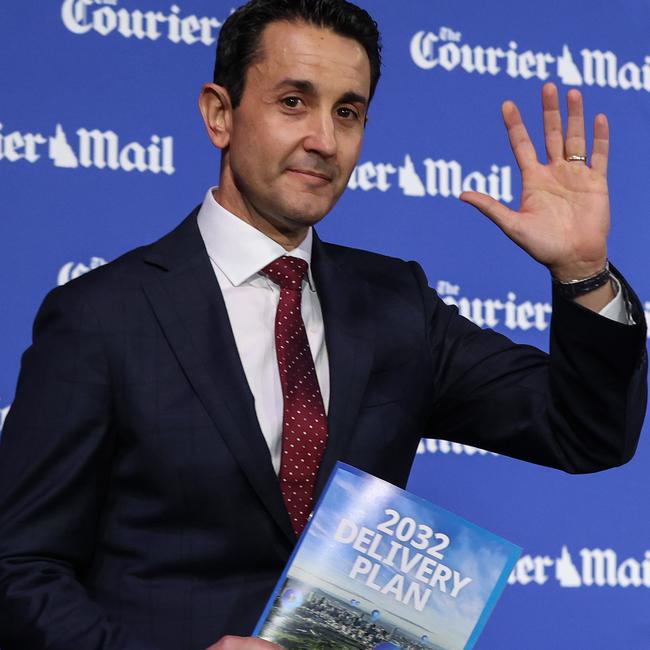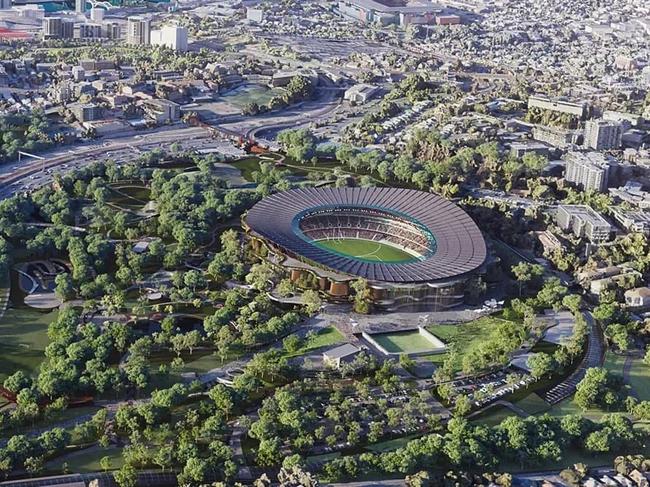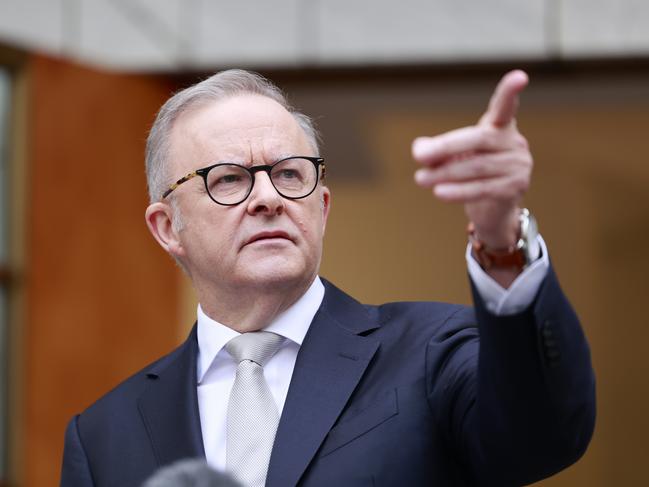Brisbane 2032: Sources reveal last-minute deals, politics and shock over state’s Games plan
A phone call just minutes before the release of the state’s Olympic infrastructure plan was the last chance for the federal government to learn where its $3.4bn of Games cash would be spent.
Brisbane Olympics 2032
Don't miss out on the headlines from Brisbane Olympics 2032. Followed categories will be added to My News.
A phone call placed 22 minutes before the release of the state’s Olympic infrastructure plan was the last chance for the federal government to learn where its $3.4bn of Games cash would be spent.
Despite Anthony Albanese and David Crisafulli publicly joking about their cannoli and coffee diplomacy, federal government sources revealed frustration about what they claimed was scarce detail about Queensland’s infrastructure plan.
As 50-50 Games partners, the Commonwealth and Queensland are intertwined about how $7.1bn in venue cash can be spent.
Key to negotiations is whether the Commonwealth will allow the state to repurpose $2.5bn allocated to the Brisbane Arena to instead be used on Victoria Park’s $3.78bn stadium.
Any change to the $2.5bn spend has to be approved by both.
After two weeks of coy engagement over venues, Queensland Sport Minister Tim Mander called his counterpart Anika Wells to offer a briefing some 22 minutes before the state’s venues plan was due to be released at The Courier-Mail’s Future Brisbane Olympic lunch last Wednesday.

That late call on the eve of the event, along with the lack of a phone call between Deputy Premier Jarrod Bleijie and Infrastructure Minister Catherine King, was evidence of the rollercoaster relationship between the two levels of government at different ends of the political spectrum.
While the federal government received the original 100-day expert report on March 8, the state’s final decisions blueprint was never sent.
“We didn’t find out about their plan until you published it,” one federal source said.
The Prime Minister, sport and infrastructure ministers didn’t receive a copy of the state’s plan, but it is understood they were instead drip-fed verbal details in an effort to avoid details leaking.
It represented an at times strained relationship between the two governments locked into a multi-billion partnership.
Questions to Mr Albanese’s office about what he knew of Queensland’s infrastructure plan went unanswered before the government entered caretaker mode.

While Mr Albanese and Ms King never received the state government’s glossy, 32-page final delivery plan, it is understood venue details were contained in an edited version of the Intergovernmental Agreement sent before the announcement.
It’s understood the pair received details of the government’s plan when they met with Mr Crisafulli and Mr Bleijie in 1 William Street on March 19 – a week before the announcement.
No deal was struck between Mr Crisafulli and Mr Albanese, and the federal election will put any progress on ice.
Queensland’s long-awaited Games masterplan hinges on the state striking a deal with the Commonwealth to carve up its cash.
Mr Crisafulli has insisted the Games will remain cost-neutral and the venue plan announced by the state government is within the $7.1bn funding envelope.
However, the Premier has also flagged more cash for Cairns’s Barlow Park and upgrades for other sports frustrated at being left off the landmark announcement.
“There is still opportunities for further development in sports right across the board,” he said.
“In terms of football’s venue we’ve just hosted the World Cup pretty recently … there’s great venues that will be used … but that doesn’t mean that something like Perry Park can’t get an upgrade that can benefit people,” he said.
“Likewise with other sports one of (Mr Mander’s) charters is to make sure that Games On becomes a truly defining legacy so that a kid in western Queensland can see a bit of benefit from the Olympic and Paralympic Games as well.”

Gymnastics Queensland chief executive Alistair Edgar said excluding one of the most-watched Olympic sports from the government’s announcement was “astonishing”.
Despite endorsing the majority of the independent panel’s recommendations, many were ignored or tinkered with.
Threats of Olympic tennis moving to Melbourne gave the government licence to deliver a major upgrade of Tennyson’s Queensland Tennis Centre – adding 12 new practice courts and a secondary 3000-seat stadium adjacent to Pat Rafter Arena.
The government’s decision – pushed by state and national tennis bodies – was well beyond the temporary show court and six extra practice courts the experts recommended.
“GIICA concluded that this proposal did not deliver legacy benefits commensurate with the
significant additional cost impost, particularly noting the vulnerability of the proposed
development site to flooding and the lack of feasible mitigation strategies,” the experts found.
Experts argued the infrastructure used for the Games would be “well in excess” of the requirements to host the annual Brisbane International tennis tournament.
The rejection of the independent panel’s advice has made life easier for 2032 President Andrew Liveris, who needs to sell millions of tickets to help cover the $5bn cost of running the Games.
“We can absolutely go after revenue optimisation thanks to the extra seats,” he said.
“This is really terrific, not just the stadium but the aquatics, the tennis – these are all extra seats and so the ability for us to now optimise on the revenue side and the cost is available to us.”
More than 12 million tickets were sold to the Paris Olympic and Paralympic Games.



